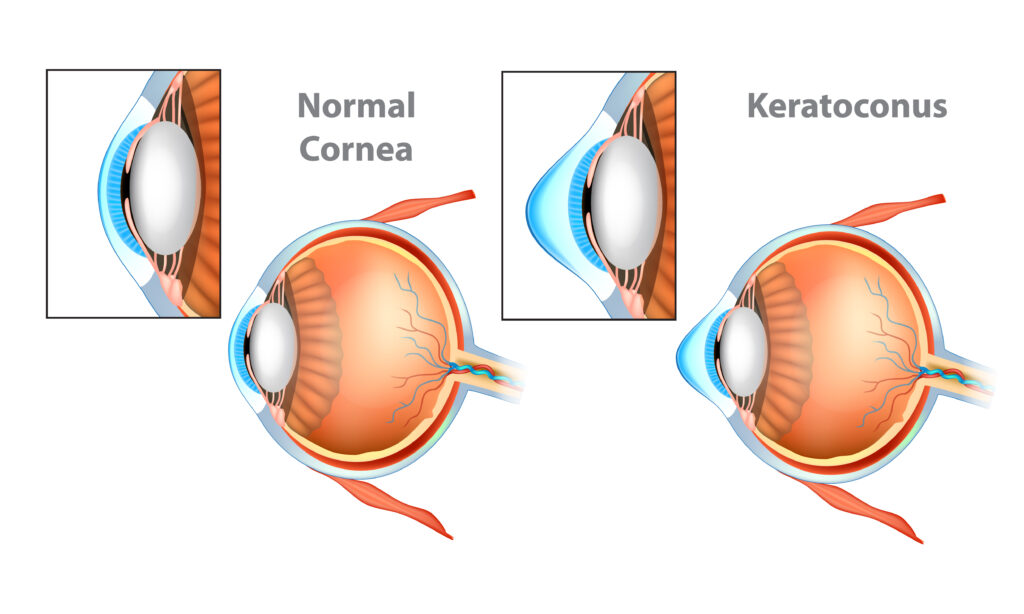Keratoconus is a degenerative disorder affecting the cornea, or the clear, dome-shaped front surface of the eye that plays a critical role in focusing incoming light onto the retina. A cornea that has developed keratoconus thins and bulges outward, taking on a cone-like shape. This interferes with focusing light on the retina and can lead to refractive errors.
Approximately one in every 1,000 individuals develops keratoconus. It usually begins during puberty and gradually advances into a person’s mid-30s.
Although keratoconus is a challenging condition, in some cases it can be managed with a minimally invasive procedure called corneal crosslinking. Corneal crosslinking strengthens and stiffens the corneal fibers to halt the disease’s progression. For some candidates, corneal crosslinking delays or prevents the need for corneal transplant, which is a more invasive treatment option.
The early detection of keratoconus is critical to halting its progression. Being aware of any personal risk factors can help increase the chances of early detection and treatment intervention.
In this post, Dr. Ernest Kornmehl discusses known risk factors for keratoconus.
Who Is At Increased Risk for Keratoconus?
Keratoconus is still largely misunderstood, despite being studied for decades.
Experts believe some people are predisposed to keratoconus because of genetic factors. Individuals with a family history of keratoconus may be at a heightened risk of getting the disease (although Dr. Kornmehl has seen many keratoconus patients who have no family history).
Another factor that can play a role in the development of keratoconus is chronic eye inflammation from allergies or irritants that contributes to the destruction of corneal tissue. Constant eye rubbing is considered a risk factor.
Keratoconus is also more prevalent in individuals with Down syndrome. According to the National Keratoconus Foundation, an individual with Down syndrome is more than 20 times more likely to get keratoconus than someone without Down syndrome.
Importance of Early Detection
Early detection of keratoconus offers the greatest number of treatment options and the best chances of stopping the progression of the disease. Dr. Kornmehl encourages everyone to be aware of their personal risk factors and see him for evaluation if necessary.
For example, if one of your parents has keratoconus, you should be regularly screened for the disease. Or, if your eyes are very sensitive to allergens, you should work with your eye doctor to keep eye inflammation under control and be on the lookout for signs of keratoconus. If you notice that your eyesight is rapidly declining for an unknown reason, you should undergo a comprehensive eye examination to check for signs of keratoconus or other corneal damage.
To request most information about keratoconus from Dr. Kornmehl, please call or email Kornmehl Laser Eye Associates today.
